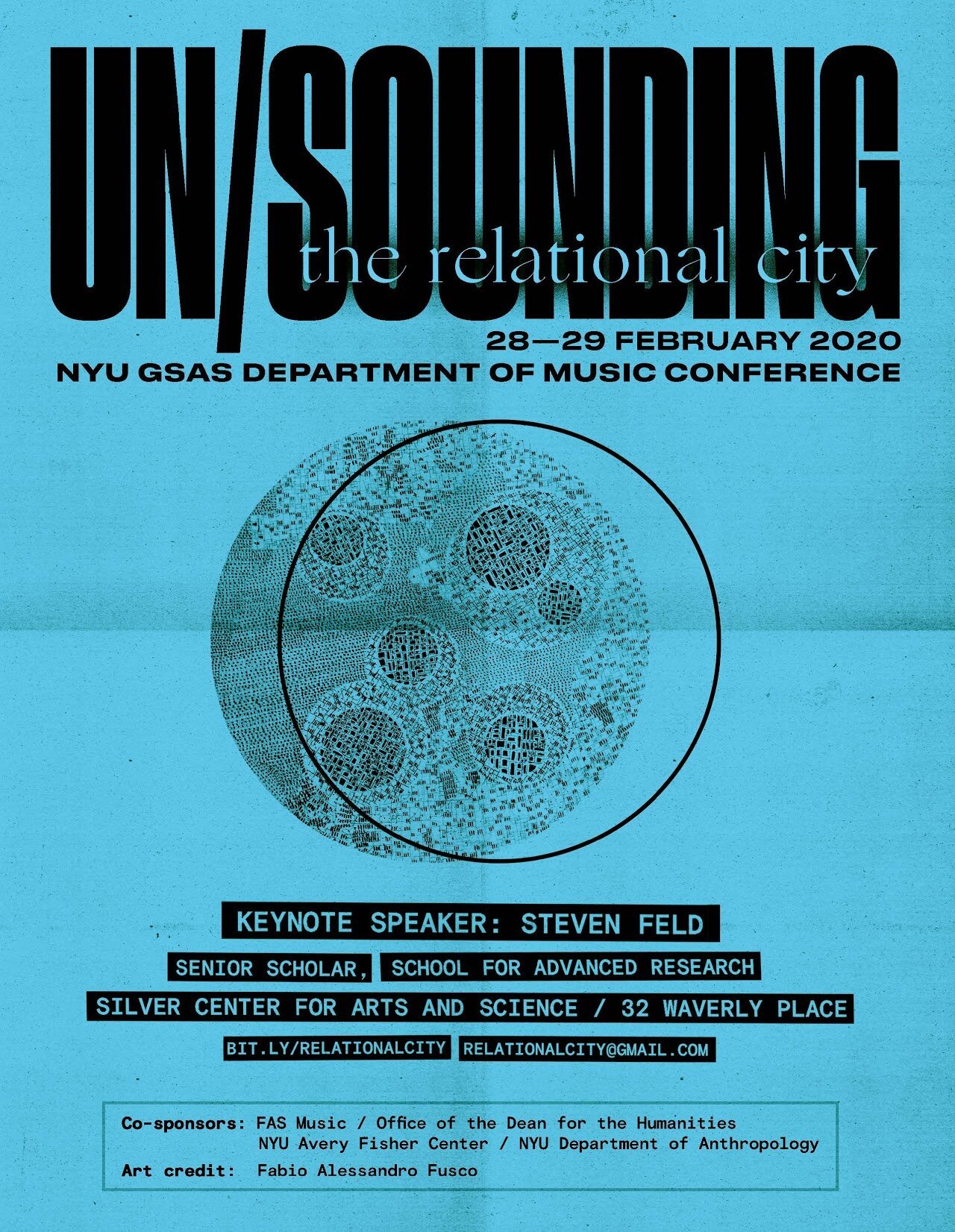“The rhythmanalyst will have some points in common with the psychoanalyst, though he differentiates himself from the latter; ... He will listen to the world, and above all to what are disdainfully called noises, which are said without meaning, and to murmurs [rumeurs], full of meaning – and finally he will listen to silences.”
Henri Lefebvre, Rhythmanalysis
Camilla Paditt-Coles, Nire Cooney, and I exhibited Hole at NYU’s Department Of Music’s conference called Un/sounding the Relational City.
Hole is an interactive sound installation, organic-machinic ecosystem, that acts as a self-reflexive instrument for the city to play. We combined in this project sound recordings and production systems we have built. One such system records snippets of auditory and sub auditory (vibration-based) environmental sounds, cuts them up, and stitches them together to emit an ongoing, abstracted, real-time sonic portrait of New York City. Another system records the pitches of the sounds in the environment and translates them in real-time into a musical composition. A third system recorded sounds that are out of auditory perception and scale them up or down for the installation. In this way, we created living sonic portraits of specific sites, including living and nonliving sounds from past and present, ranging from Greenwood Cemetery to Brooklyn’s construction sites to the sounds of tree networks and underground insect activities of public parks. Interlocking systems morphing into a cyborg organism. The soundscape is a mix of past recorded sound intermixed with speculative sounds and reflective sounds and finally the manipulated bits of real-time sound that listeners emit while conversing or simply breathing next to the object.
In this way, the participants are made aware of their presence inside of the sonic composition and identified as complicit in this ecosystem.Acknowledging our presence’s effects on the surroundings, we hope to facilitate a more active engagement with all the seen and unseen, heard and unheard, living and machinic actors of this city.
These pods served as sites of sound production, listening, and audience participation.
We hope that in future iterations these sound-emitting and sound-recording pods would remain installed in the environments where they absorbed past sounds, which would provide an opportunity for these sites to continue to imprint onto the composition, evolving over time along with the space.







